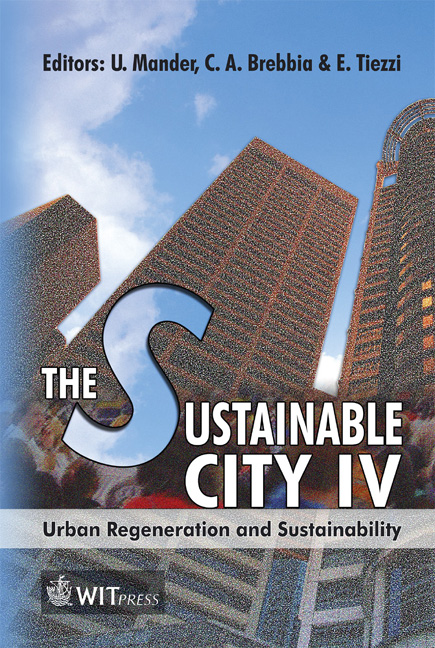Structuring The World Down To Cities And Sustainable Air Sharing
Price
Free (open access)
Transaction
Volume
93
Pages
9
Published
2006
Size
482 kb
Paper DOI
10.2495/SC060291
Copyright
WIT Press
Author(s)
H. H. Kleizen
Abstract
Cities live and need air to breathe. The annual air consumption of human activities in the Sustainable Technological World (STW) is prescribed (2006 thesis). This STW budget is shared by people. Densely populated areas have a larger air budget than less dense ones. The structure of human societies in subsocieties is described with a logarithmic distribution. This novel 5 parameter topdown model allows the description of the World in countries, countries in provinces and provinces in cities enabling one to study scale effects (entities with the same sub entity structure). It is shown that the Dutch province Zuid-Holland with two large cities (Rotterdam and The Hague) has the same structure as the World with two large countries (China and India). The cities and countries – embedded in their environment (Zuid-Holland, World) – are compared with respect to the categories of geography, people, government and transportation. It is concluded that indeed scaling occurs between Rotterdam and China and between The Hague and India. The differences in carbon dioxide emissions are reviewed with respect to air consumption allowed by the STW. Keywords: air, carbon dioxide emissions, China and Rotterdam, cities, countries, government, India and The Hague, novel society model, Sustainable Technological World, World and Zuid-Holland. 1 Introduction There is vast amount of literature about human societies through the ages. Brotchie et al. [1] state that cities are in competition and according to Rusk [2] with counties and there are well-known cases where cities have become identical
Keywords
air, carbon dioxide emissions, China and Rotterdam, cities, countries, government, India and The Hague, novel society model, Sustainable Technological World, World and Zuid-Holland.





